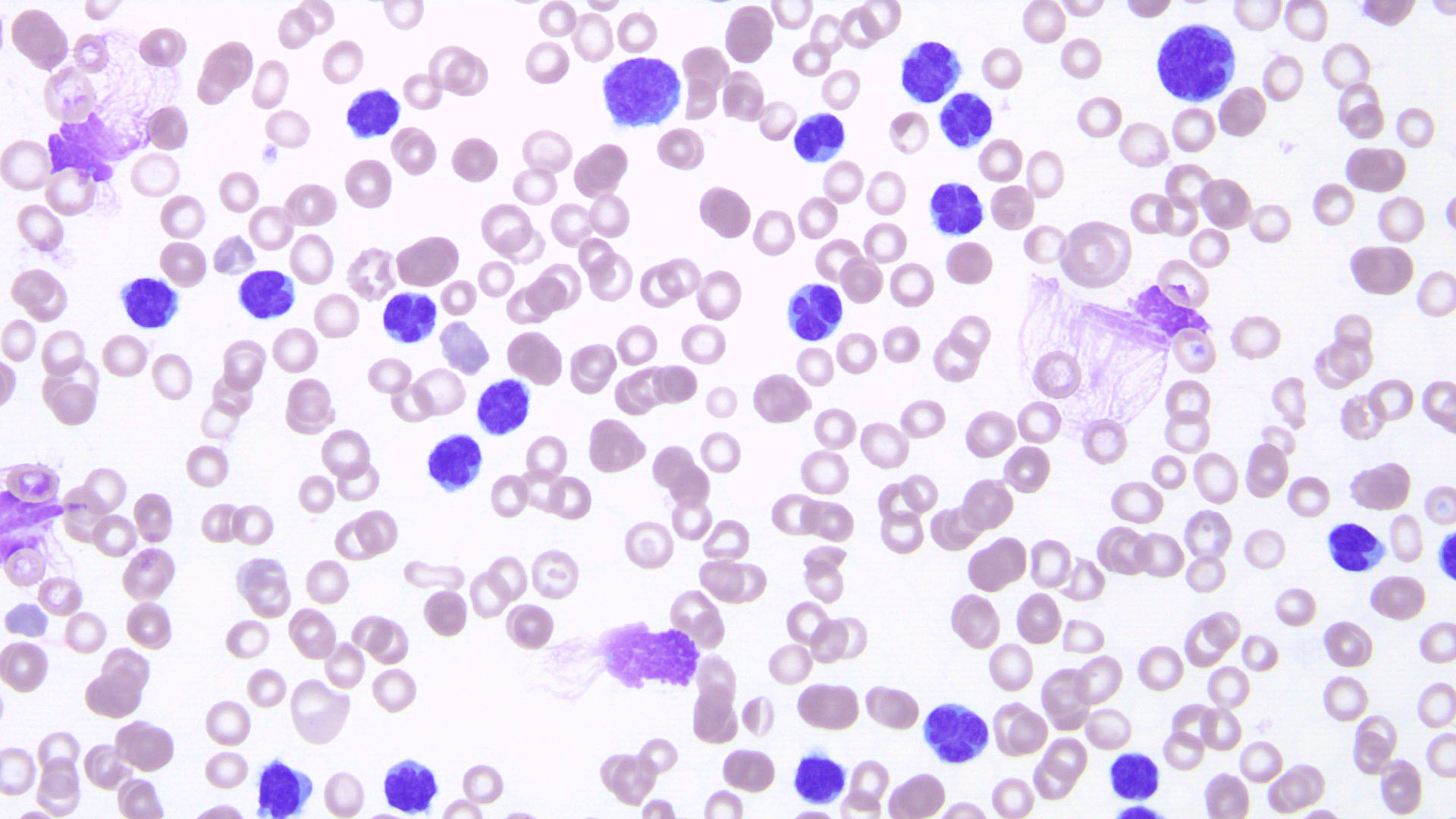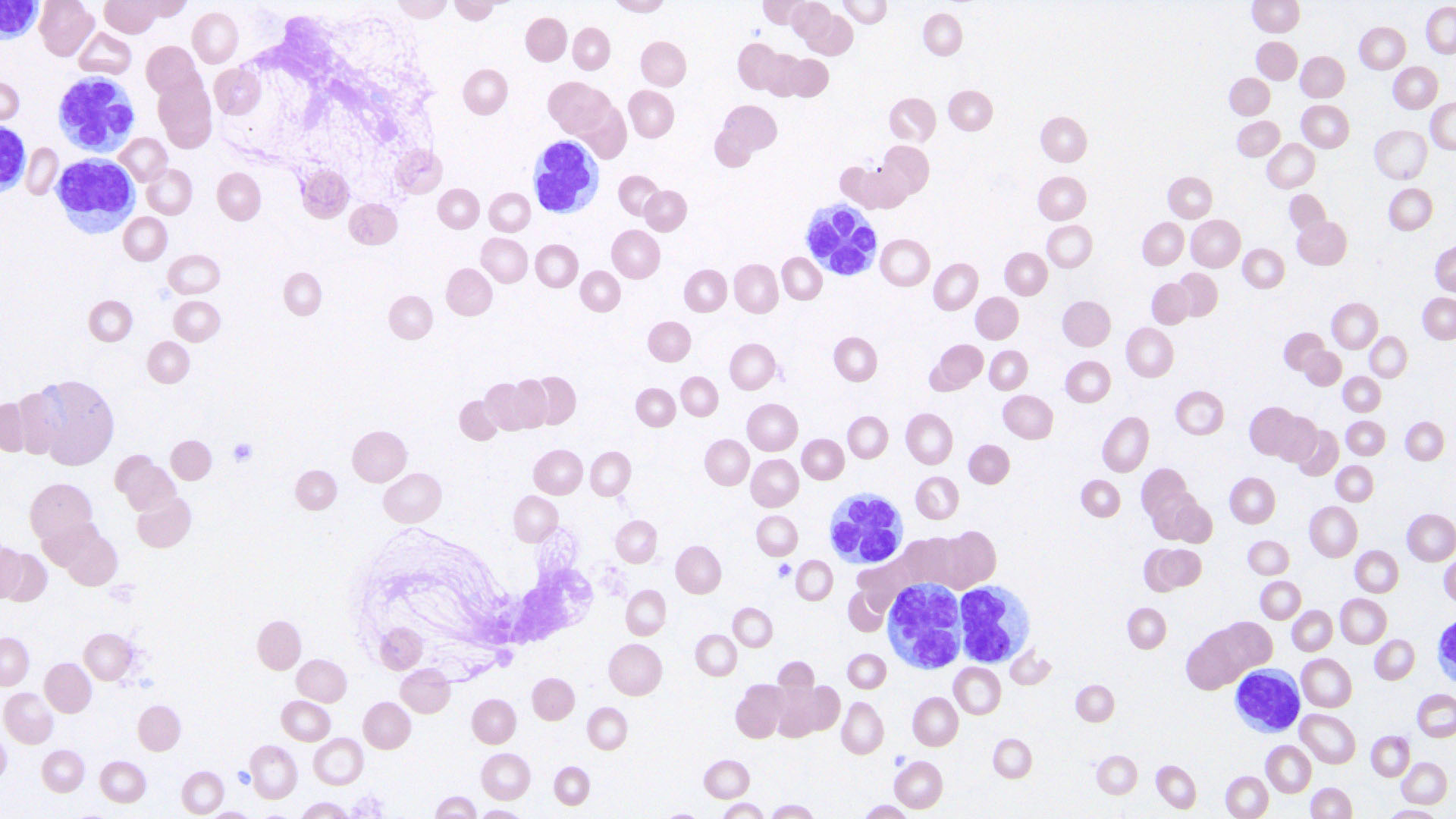Case History
A 62 year old female presents with leukocytosis (WBC 230k), fatigue, fevers and abdominal pain x1 month. CMP and LFTs are within normal limits. The neoplastic cells are negative for CD34 and TdT.
Based on the pictures below, what is the most likely diagnosis.
- Sezaly syndrome
- Adult T-cell lymphoma/leukemia
- T-cell leukemia with mature phenotype
- T-Acute Lymphoblastic Leukemia/Lymphoma



Answer: C: Adult T cell Leukemia with mature phenotype
This is a challenging diagnosis and all four of the listed entities should be included in the differential diagnosis with adult T-cell leukemia with mature phenotype being a diagnosis of exclusion. One of the key features of T cell neoplasms is loss of expression of one of the T cell markers (CD3, CD4, CD8, CD5, CD7 or CD2). In our case there is complete loss of CD8.
Sezary syndrome is incorrect in this case due to the lack of skin lesions. Additionally, the clover-leaf like morphology ofthe T cells in the peripheral blood is not classic of Sezary cells. Classically you would see "cerebriform" cells that contain deep longitudinal folds / grooves. The immunophenotype by flow cytometry in this case is characteristic of Sezary syndrome (CD3+, CD4+, CD8-, CD25-), so clinical history and morphology is important to exclude this entity.
Adult T cell leukemia/lymphoma (ATLL) is less likely due to the immunophenotype and the normal BMP seen in this patient. In ATLL you should have CD25 positivity and hypercalcemia. Additionally our patient was negative for HTLV which excludes the possibility of ATLL. In contrast, the morphology of the neoplastic T cells in the blood smear (clover-leaf like) is classic of ATLL.
T-Acute lymphoblastic leukemia/lymphoma (T-ALL) should be considered because of the high white count which consists of predominately atypical lymphoid cells. It is ruled out because the cells in our case are negative for CD34 and nuclear TdT by flow cytometry. Additionally, clover leaf like morphology is not typical of T-ALL. Blast morphology (open chromatin, prominent nucleoli, high N:C ratio) would be more typical.
Adult T-cell leukemia with mature phenotype is favored in our case due to ruling out other leukemic T cell processes and not finding a lymphoma component (nodal or tissue involvement).